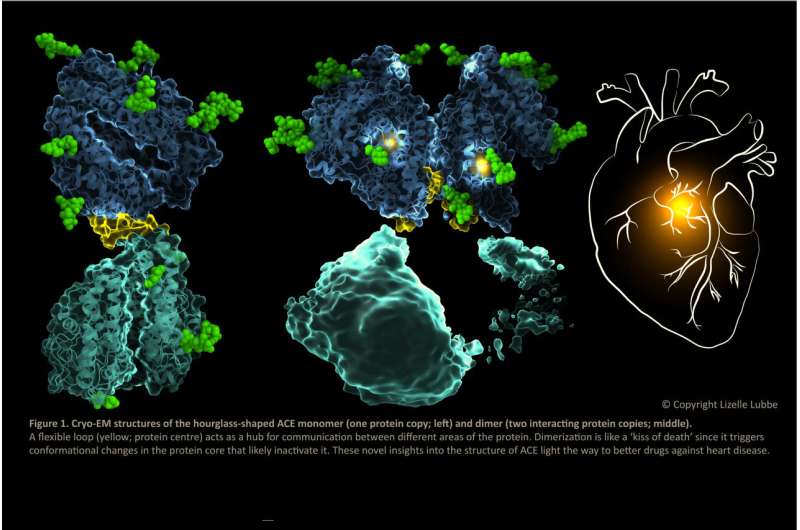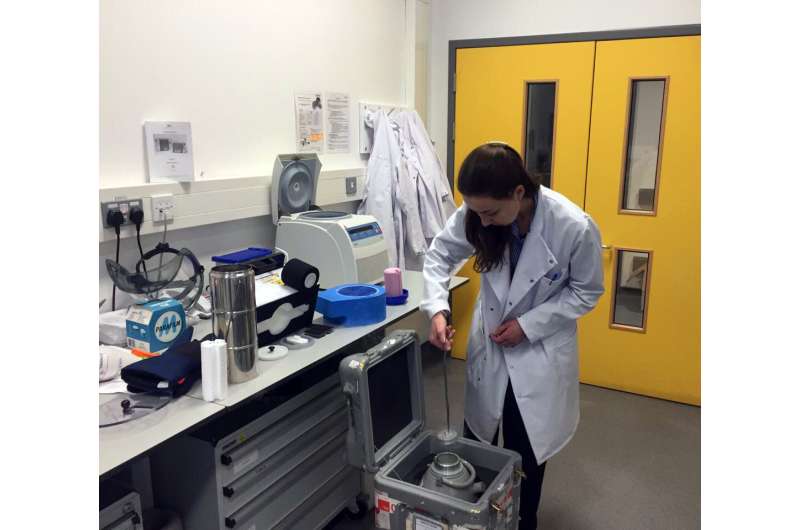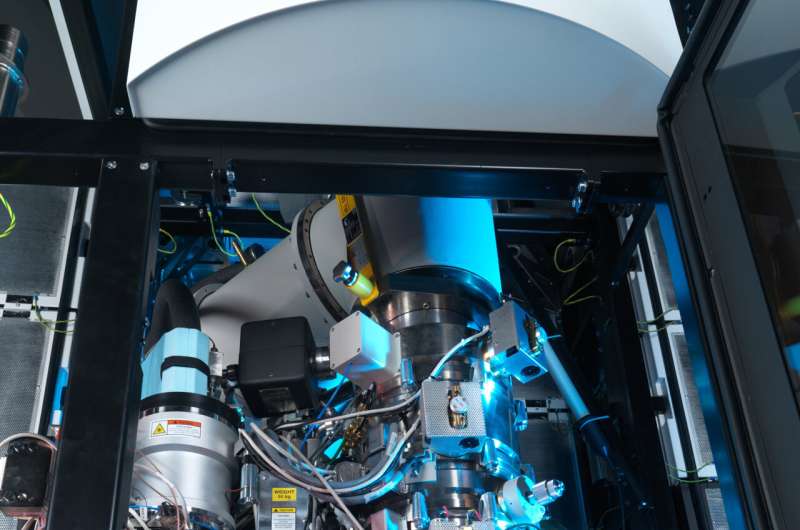First cryo-EM structures of angiotensin-converting enzyme pave the way for better drugs to treat heart disease

The first full-length structures of the human angiotensin-converting enzyme (ACE) have been determined by researchers from the University of Cape Town (UCT) using cryo-electron microscopy (cryo-EM). ACE is a blood pressure-regulating protein that is critical for heart health.
Published in The EMBO Journal on July 12, 2022, the cryo-EM structures of ACE in two different conformations have the potential to improve drug design for cardiovascular disease—the leading cause of death worldwide.
Dr. Lizelle Lubbe, Dr. Jeremy Woodward, Professor Ed Sturrock, and Professor Trevor Sewell performed the study. The ACE protein was produced in UCT's Sturrock Laboratory and prepared for high-resolution imaging at UCT's Electron Microscope Unit (EMU). It was transported to the electron Bio-Imaging Center (eBIC) at the U.K.'s national synchrotron, Diamond Light Source (Diamond) for high-resolution imaging. Image processing took place at South Africa's CSIR Center for High Performance Computing (CHPC) and the EMU.
ACE is a key target for the treatment of hypertension (elevated blood pressure) and cardiovascular disease since it produces the hormone Angiotensin II, which constricts blood vessels and raises blood pressure. Hypertension is a major risk factor for heart failure, heart attack, kidney disease, stroke, and loss of vision. It often shows no symptoms and is known as "the silent killer."

The monomeric form (one copy of the protein) of ACE is intriguing because it is made up of two structurally similar but functionally distinct domains that are linked together. It also exists in a functionally relevant dimeric form (two interacting copies of the protein) that was seen in the study. Communication between the different parts of ACE influences its function and drug binding properties, which are vital for therapeutic drug design.
"Clinically, ACE inhibitors are recommended as one of the first-line treatments for hypertension, but they non-selectively target both ACE domains and thereby trigger side effects in some patients," says principal investigator of the study, Professor Sturrock. "It is really important to understand the structure and dynamics of these newly seen forms of ACE because this could help identify novel sites for the design of domain-selective inhibitors that avoid such side effects."
The study's findings uniquely reveal ACE's highly dynamic nature, and the mechanisms by which dimerization and communication occur between its different domains. "By changing from an active-site centered to a holistic view of this vital protein, we obtained valuable new insights into how ACE works," says first author of the study, Dr. Lubbe.
"The dynamic nature of ACE prevents crystal formation, which meant that X-ray crystallography studies over the past two decades could only solve parts of the structure," explains study co-author, Professor Sewell. "We discovered many clues using this method but were unable to solve the full puzzle until we had access to high-resolution cryo-EM."

To obtain the complete structure, the protein was rapidly cooled to –180 degrees Celsius, trapping the different conformations in a very thin, glass-like film of water at the EMU. After this, an advanced Titan Krios microscope at eBIC was used for imaging. "Even with high-resolution imaging, the unique shape, small size, and dynamic nature of ACE posed many challenges," says study co-author, Dr. Woodward.
"Recently developed cryo-EM image processing methods were crucial to solving the structures," Dr. Lubbe explains. "We had to separate the images computationally through extensive classification, amounting to 'digital purification' because biochemical methods failed to separate the monomeric and dimeric forms of ACE. We could then solve both ACE structures by focusing the 3D refinement on different parts of the structure in turn."
"We are delighted with the findings of this study achieved by a brilliant team of scientists in Africa, using eBIC's advanced cryo-EM at Diamond," says Professor Chris Nicklin, Diamond Science Group Leader, and principal investigator in the GCRF START grant project. "This is an excellent example of U.K. and African research partnerships and global impact through the very successful GCRF START grant. The world urgently needs sustainable solutions for killer heart diseases and other chronic health conditions. We are very excited that the study's structural insights could pave the way for improved antihypertensive drug design."
More information: Lubbe, L., Sewell, B.T., Woodward, J.D., Sturrock, E.D., Cryo‐EM reveals mechanisms of angiotensin I‐converting enzyme allostery and dimerization. The EMBO Journal (2022). DOI: 10.15252/embj.2021110550 , www.embopress.org/doi/10.15252/embj.2021110550
Journal information: EMBO Journal
Provided by Diamond Light Source



















